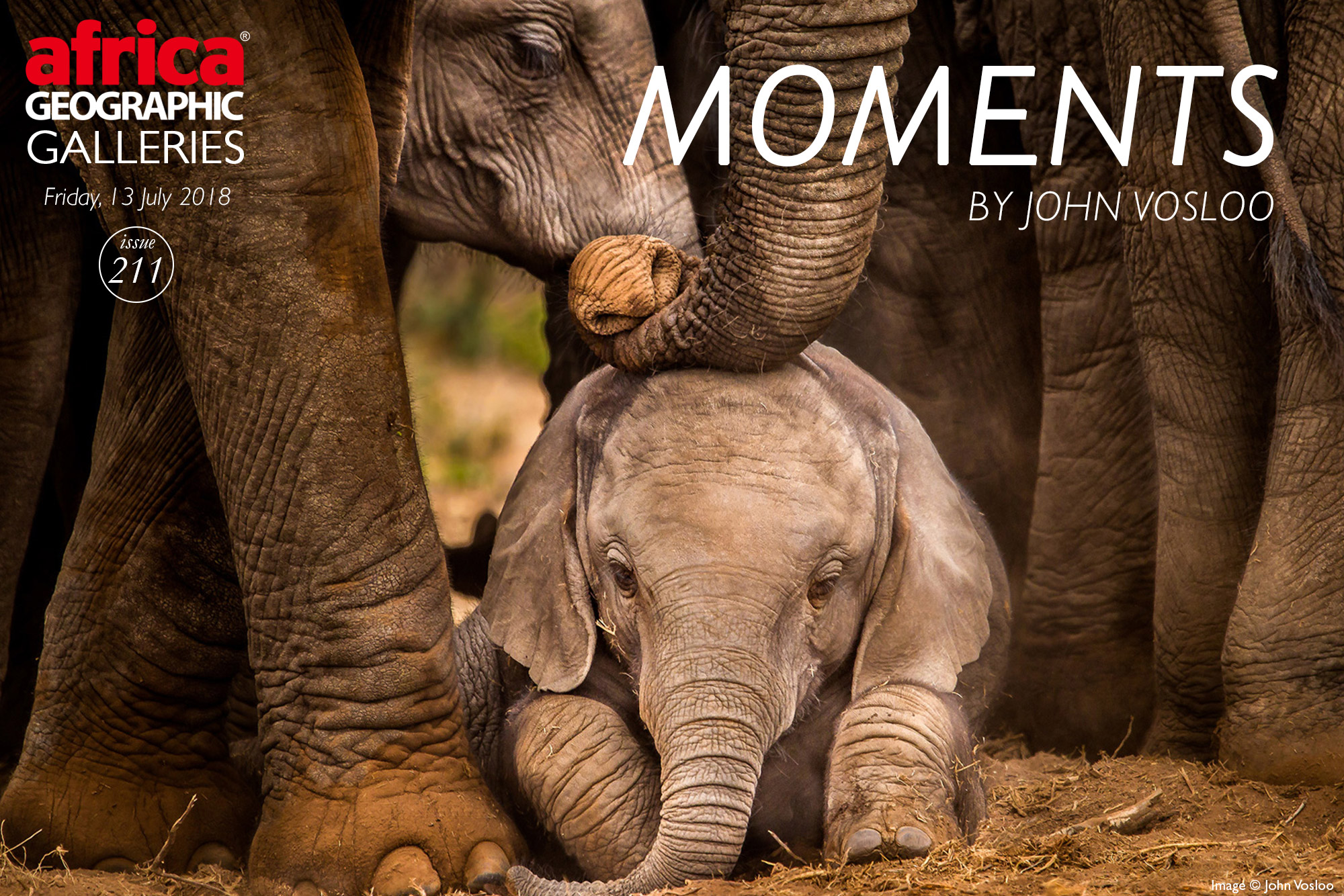
Moments

Celebrated winner of our 2017 Photographer of the Year, conservation photographer John Vosloo continues to amaze and astound with his incredible wildlife photography.
John has a knack for catching moments in time. From a lioness showing her displeasure to a young elephant calf getting a time-out, these snapshots into the lives of African wildlife is what this gallery is all about.
Here we present a selection of some of his favourite photos that he took in the Addo Elephant National Park and surrounding areas in the Eastern Cape in South Africa, along with his thoughts.

“This was a very exciting image to capture as mother elephants usually hide their babies out of direct sunlight to prevent sunburn, so you seldom get the chance to see one drinking with enough light to capture a decent photo – they are usually in the shadows by their mother’s side, and one generally battles to get enough light.
“In this case, 1/200 sec and more than the usual light secured this unique image. On a bright day (as was the case in this image) you can also get lucky with the sunlight reflecting off the ground and up into the shadows – like a natural light reflector.”
Canon EOS 1D MK4 with a Sigma 150-600mm lens (sport version) – f7.1 1/200 sec ISO 640 @ 600mm
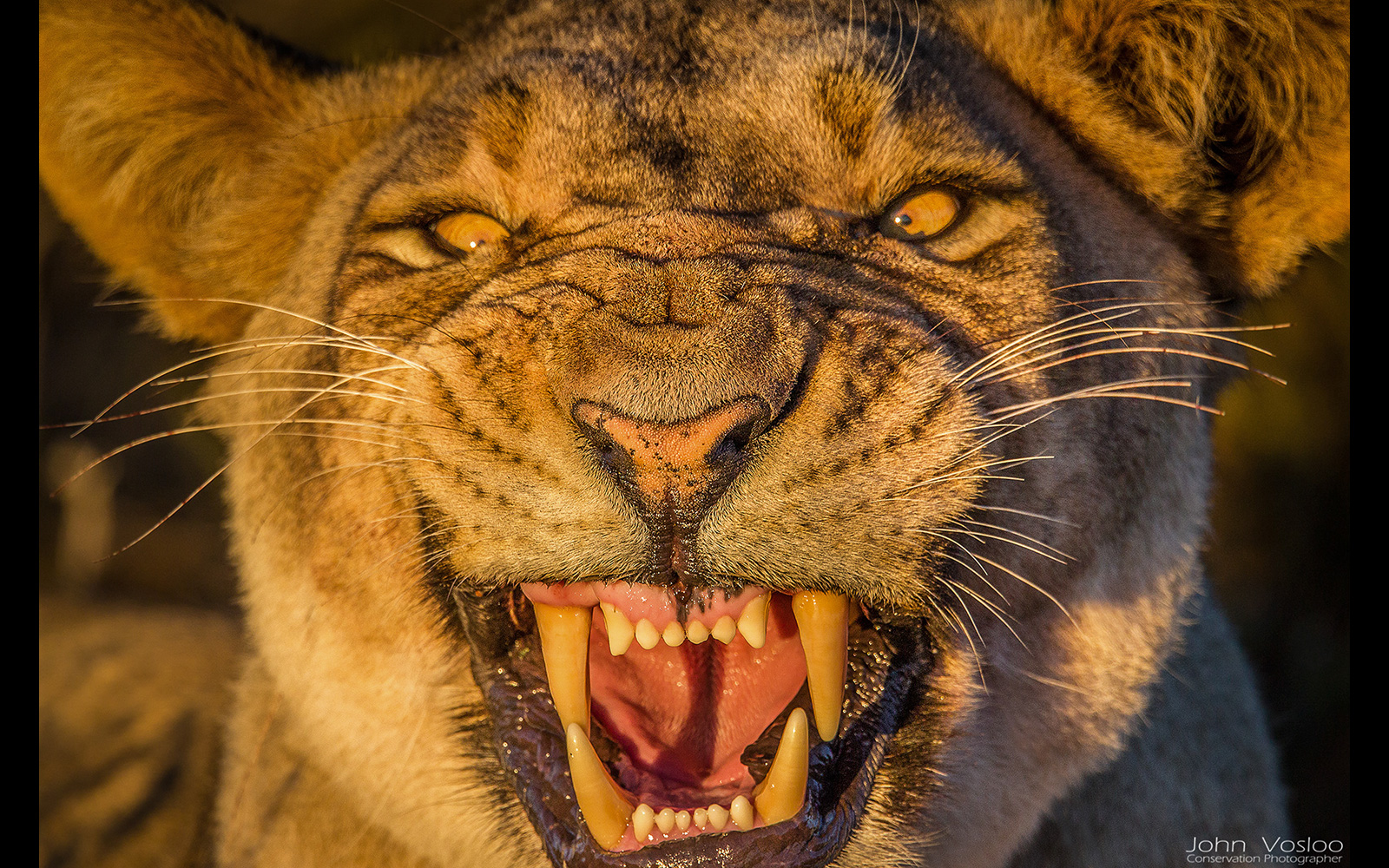
“I took this image of this lioness at Kuzuko Lodge (a 5-star game lodge in Addo Elephant National Park) while feeding on a kudu kill. Her aggressive mood and “stay clear” signals caught my attention as they always make for a compelling and in-your-face image, especially when cropped tightly as in this case. Those eyes say it all!”
Canon EOS 1D MK4 with a Sigma 150-600mm lens (sport version) – f7.1 1/100 sec ISO 800 @ 534mm

“This hyena with an antelope’s leg was photographed in the very early morning in the Addo Elephant National Park. They are often seen with a leg or a bone scuttling away to feed in peace. They always seem to be on the move.
“Whenever you get close to one of these creatures, it always amazes me how much bigger they are. They are very impressive killing machines when seen up close – precisely built in perfect form and function for their purposes in every respect. All in all, an impressive animal to see and experience up close in the wild. At close quarters they always send shivers down my spine.”
Canon EOS 1D MK4 with a Sigma 150-600mm lens (sport version) – f7.1 1/320 sec ISO 1600 @ 380mm

“In the Addo Elephant National Park, this little chap was getting a bit out of hand, and the parents put him in his place. They pegged him down and calmed him in a peaceful, firm and gentle manner – AND IT WORKED!
“These giants often do things gently but with firm purpose. Perhaps that is why their family groups are generally well behaved, and there seems to be mutual respect between all members. Some rowdiness is tolerated, but when it gets out of hand, it is always dealt with firmly and with some finality and success. A winning combination in a group where size most definitely matters!”
Canon EOS 1D MK4 with a Sigma 150-600mm lens (sport version) – f7.1 1/400 sec ISO 800 @ 600mm
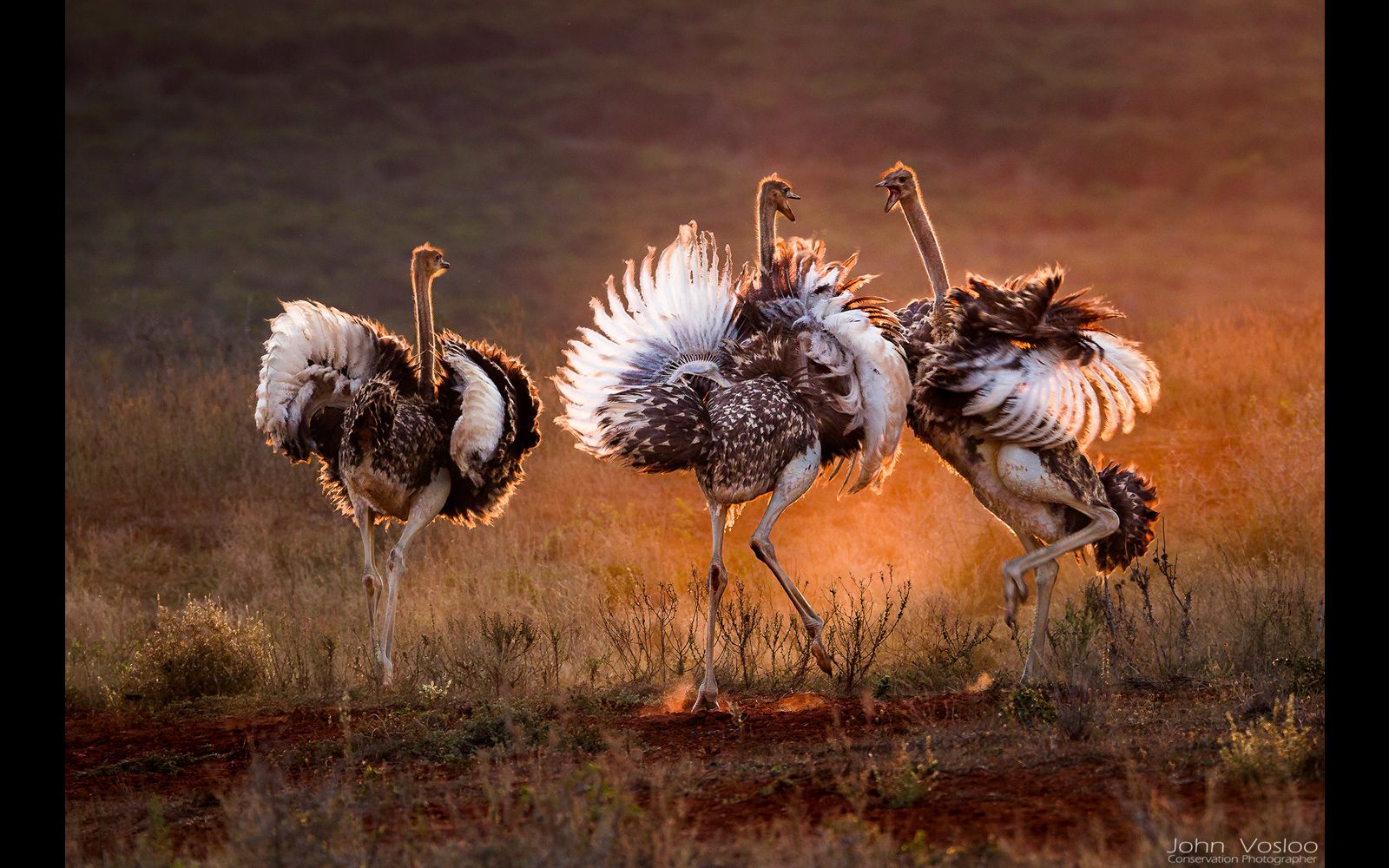
“I had been following these three ostriches from birth when they were part of a group of about seven (only these three made it to adulthood), and the older they got, the more physical and boisterous they became. I caught them one evening after a dust bath against the setting sun in the Addo Elephant National Park having a dispute and almost getting into a full-blown fight – the lighting and dust was awesome and made for a great moody image.”
Canon EOS 1D MK4 with a Sigma 150-600mm lens (sport version) – f7.1 1/400 sec ISO 1000 @ 380mm

“This elegant cat photographed in the Addo Elephant National Park (where he and his three brothers “broke into the camp”, and nobody knew where they came from) is always a privilege. They ooze elegance and are just perfect in form and function to do what they do best – hunt at high speed.
“In this case, his ‘1000-yard stare’ caught my attention, with those eyes and ears picking up everything and anything in the bush. A highly effective and elegant predator and always a pleasure to see and photograph.”
Canon EOS 1D MK4 with a Sigma 150-600mm lens (sport version) – f7.1 1/6400 sec ISO 800 @ 512mm
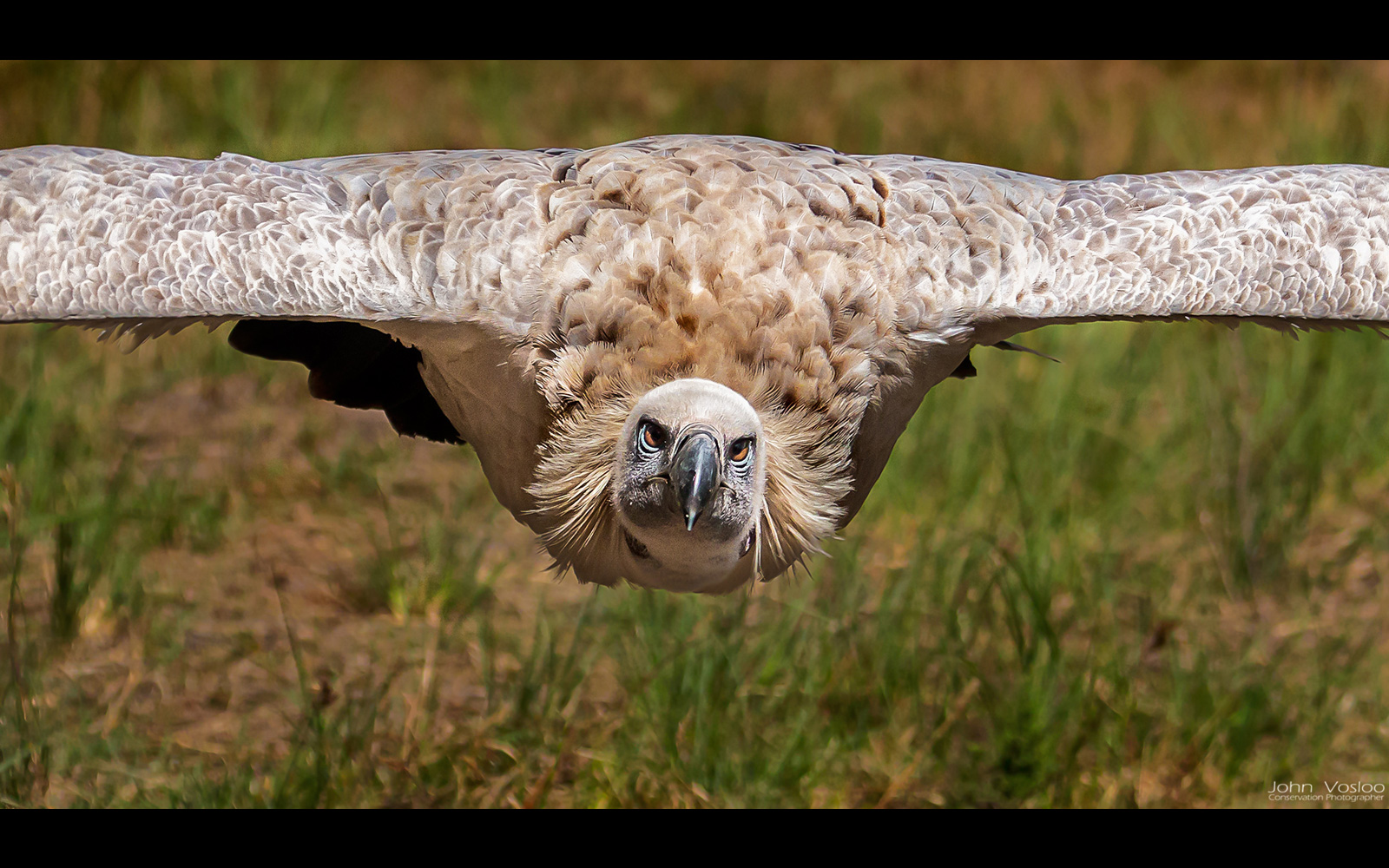
“This image was taken at Radical Raptors, a rehabilitation centre for raptors situated between Knysna and Plettenberg Bay in the Eastern Cape. This particular vulture is non-releasable and is used for educational purposes while free-flying around the area. It was quite an intimidating experience, having a vulture of this size swooping down into my face, but fun all the same.”
Canon EOS 1D MK4 with a Sigma 150-600mm lens (sport version) – f6.3 1/5000 sec ISO 3200 @ 600mm

“This Cape buffalo (AKA Black Death) had such an intimidating stare that I was compelled to try and capture his mood and attitude – always in a bad mood and always with an aggressive attitude. Choosing black and white over colour worked well to depict this dagga boy as the cantankerous tank of the African bush.
“It is always exciting to get up close and personal to these huge creatures and never knowing what to expect. They just ooze confidence, power and demand attention from all and anything around them.”
Canon EOS 1D MK4 with a Sigma 150-600mm lens (sport version) – f7.1 1/30 sec ISO 640 @ 600mm
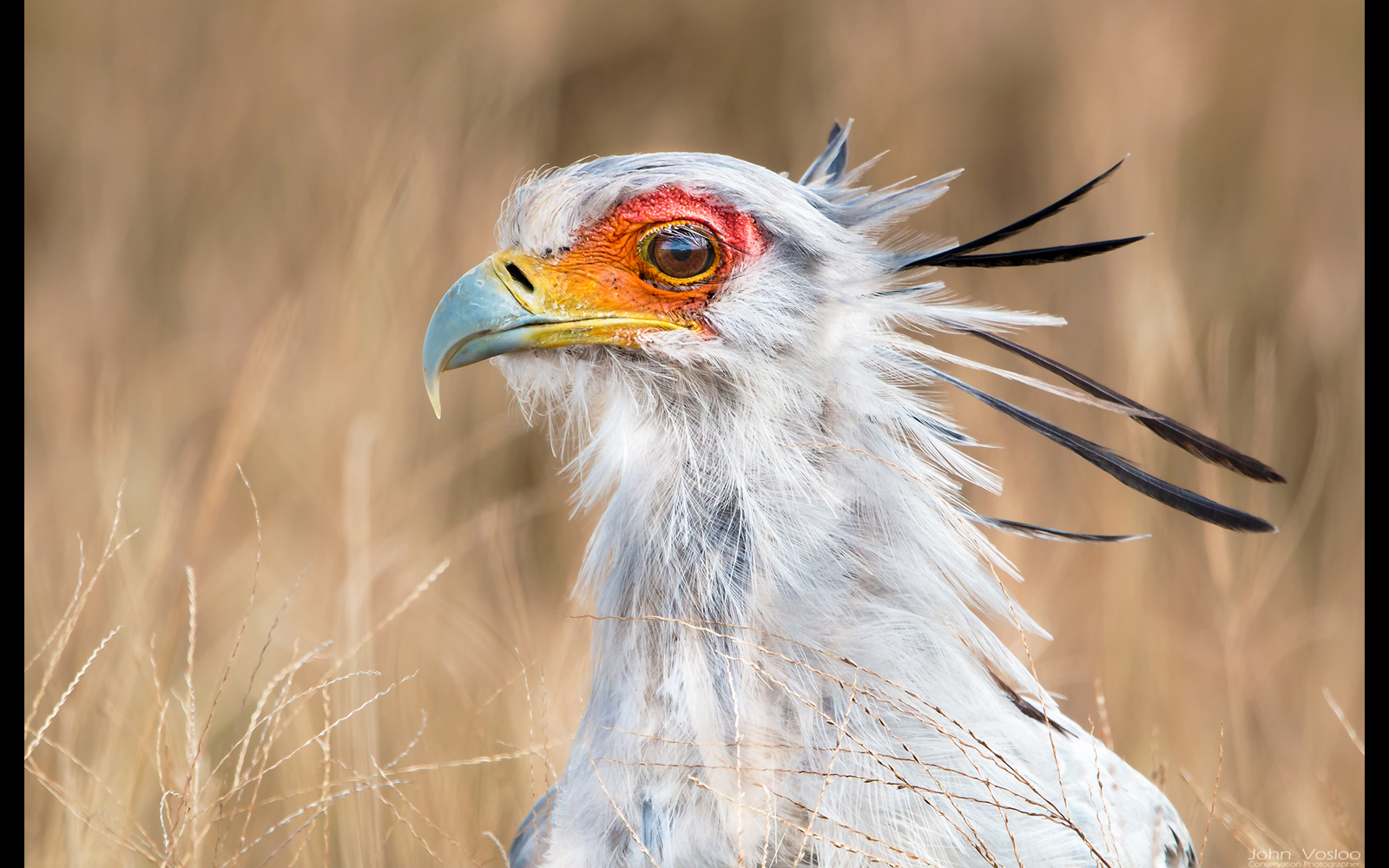
“This secretary bird was on the hunt in the Addo Elephant National Park. Their keen and alert approach is always interesting to observe, but taking a photo of them can be challenging as they are difficult to capture on camera due to their size and speed when hunting. Therefore much patience and planning are required to get close and secure a shot – their rather predictable hunting patterns help this, and one can usually anticipate where they will be during their walking hunt.
“I got lucky with this shot as they are quite skittish and generally do not allow one to get too close or allow much time for composition and focus.”
Canon EOS 1D MK4 with a Sigma 150-600mm lens (sport version) – f7.1 1/2500 sec ISO 800 @ 600mm
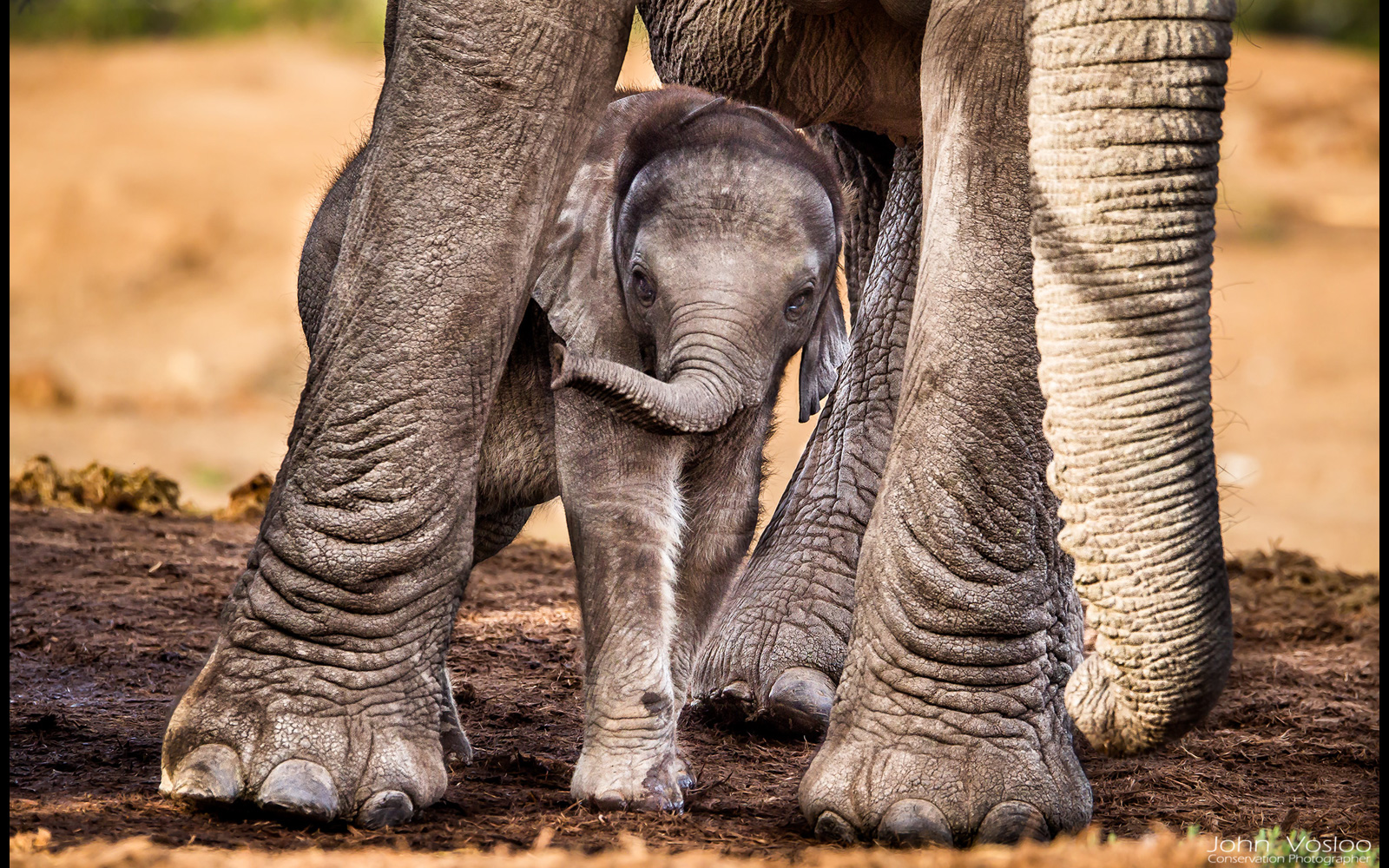
“This little elephant calf, taken at the Spekboom waterhole in the Addo Elephant National Park, is still very young, with telltale hairs still prevalent on its body. Under close protection from mom (as is always the case!), this image depicts the size difference between the two and shows how big these behemoths can get as opposed to how tender, small and vulnerable they are when born.
“Baby elephants are always a great photographic subject as they are playful and full of antics that can keep the photographer mesmerised for hours on end. Always a great experience shooting these little guys.”
Canon EOS 1D MK4 with a Sigma 150-600mm lens (sport version) – f71. 1/400 sec ISO 1000 @ 430mm
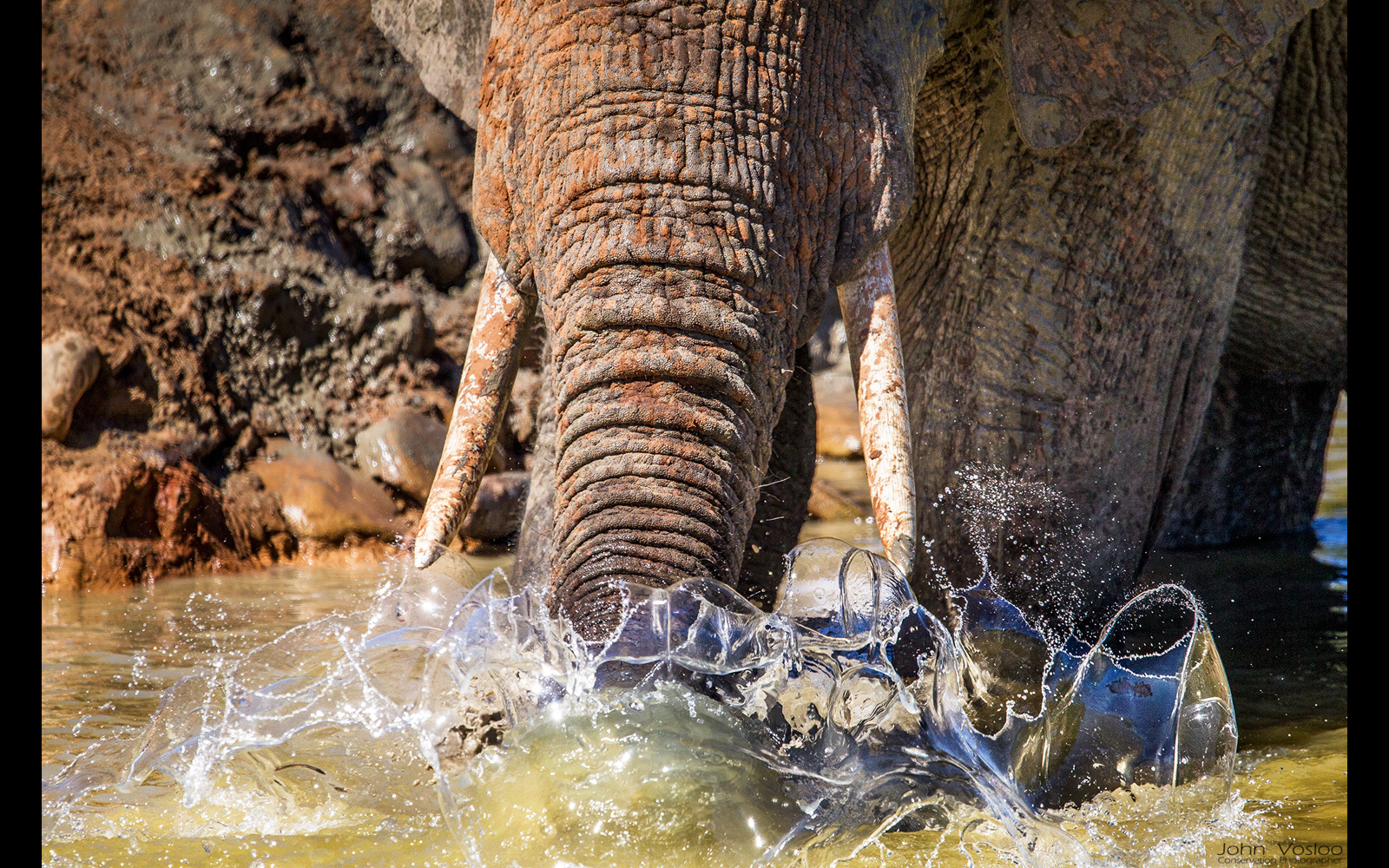
“This elephant was blowing bubbles in the water at the Hapoor Dam in the Addo Elephant National Park. Sometimes elephants seem to enjoy ‘playing’ with the water by blowing bubbles or smashing it with their trunks or feet in a spectacular manner. In this image, the sunlight caught the water in such a unique way that it looked like sheets of bubbled water, making for an interesting ‘waterscape’.”
Canon EOS 1D MK4 with a Sigma 150-600mm lens (sport version) – f7.1 1/200 sec ISO 800 @ 600mm
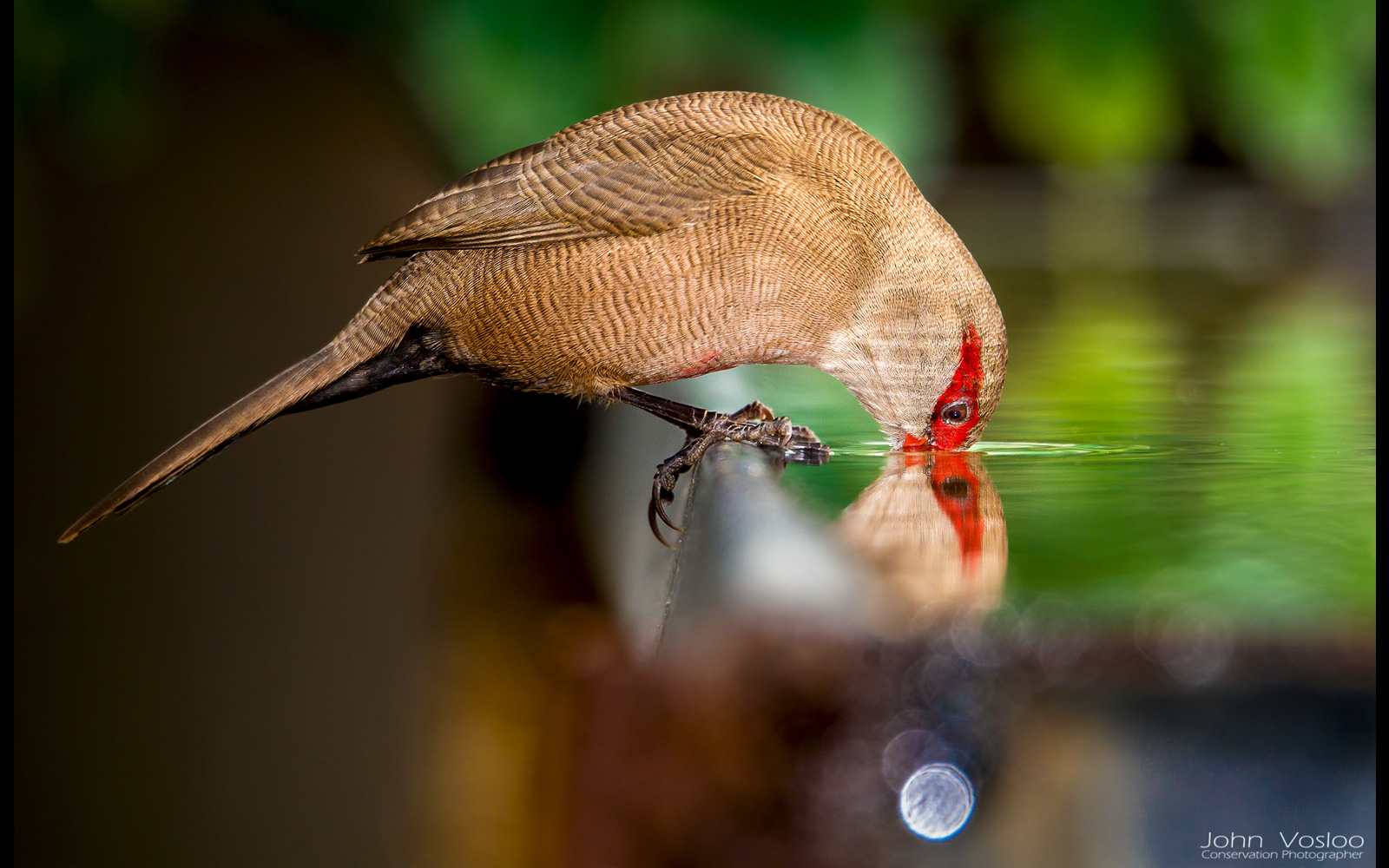
“This pretty little common waxbill was photographed in our garden at a water trough we put out for them. Having a shallow tray of water in your garden is sure to attract a variety of birds, and can be utilised to create awesome images of the birds drinking, bathing, feeding or fighting.
“Patience is the name of the game with precise focusing and honed techniques as they are swift little birds to photograph – always a challenge one enjoys rising to.”
Canon EOS 1D MK4 with a Sigma 150-600mm lens (sport version) – f6.3 1/1600 sec ISO 800 @ 600mm
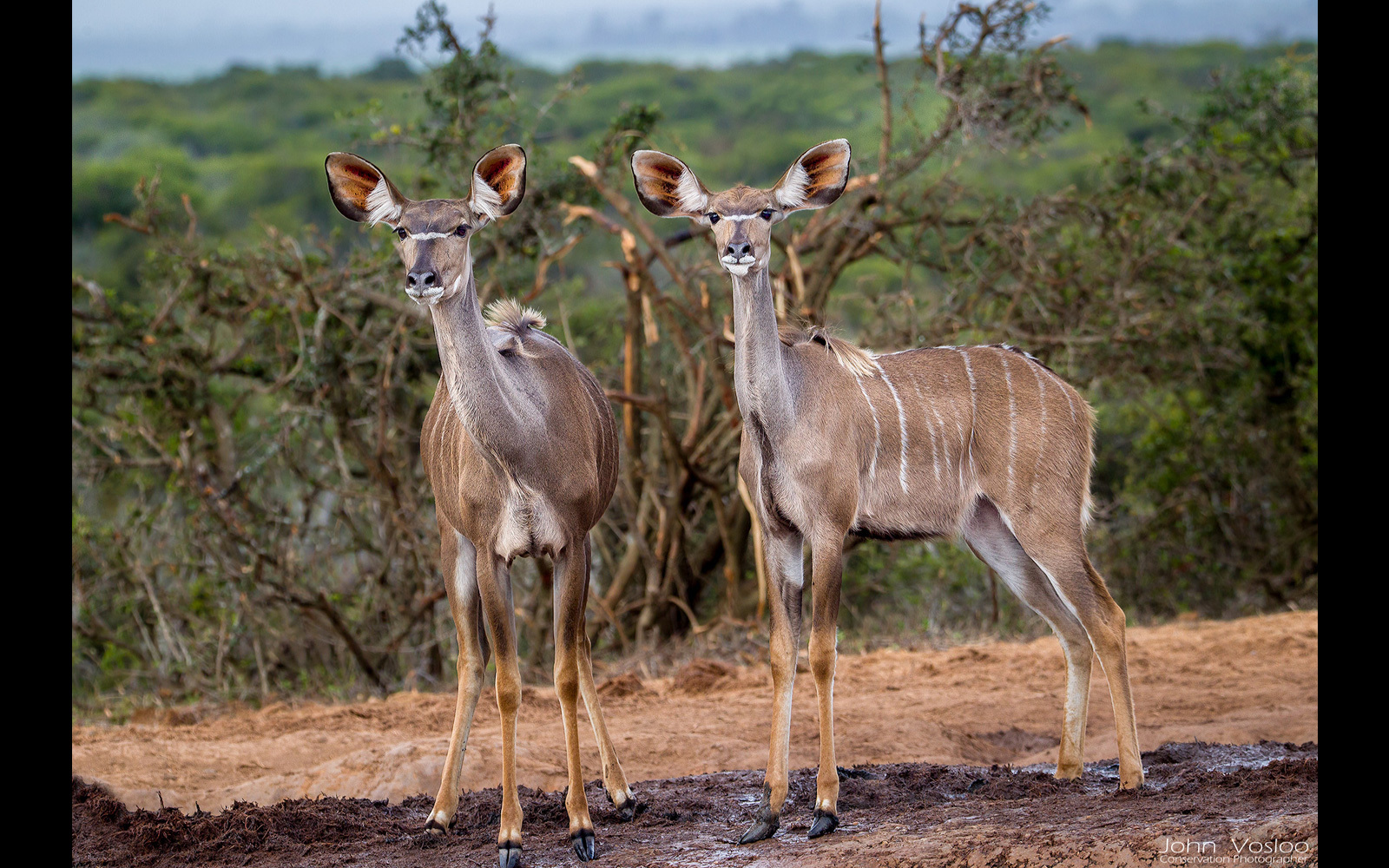
“These two kudu cows, photographed in the early morning in the Addo Elephant National Park, depict the grace and elegance of African wildlife. Those prominent ears, coupled with superb eyesight, do not miss a thing. Being super alert is their mantra – nothing comes, goes or moves without them knowing. They are hardy, intelligent, crafty and are not known as the grey ghosts of Africa for nothing! They can disappear in a flash and are true masters of camouflage.”
Canon EOS 1D MK4 with a Sigma 150-600mm lens (sport version) – f7.1 1/500sec ISO 640 @ 270mm
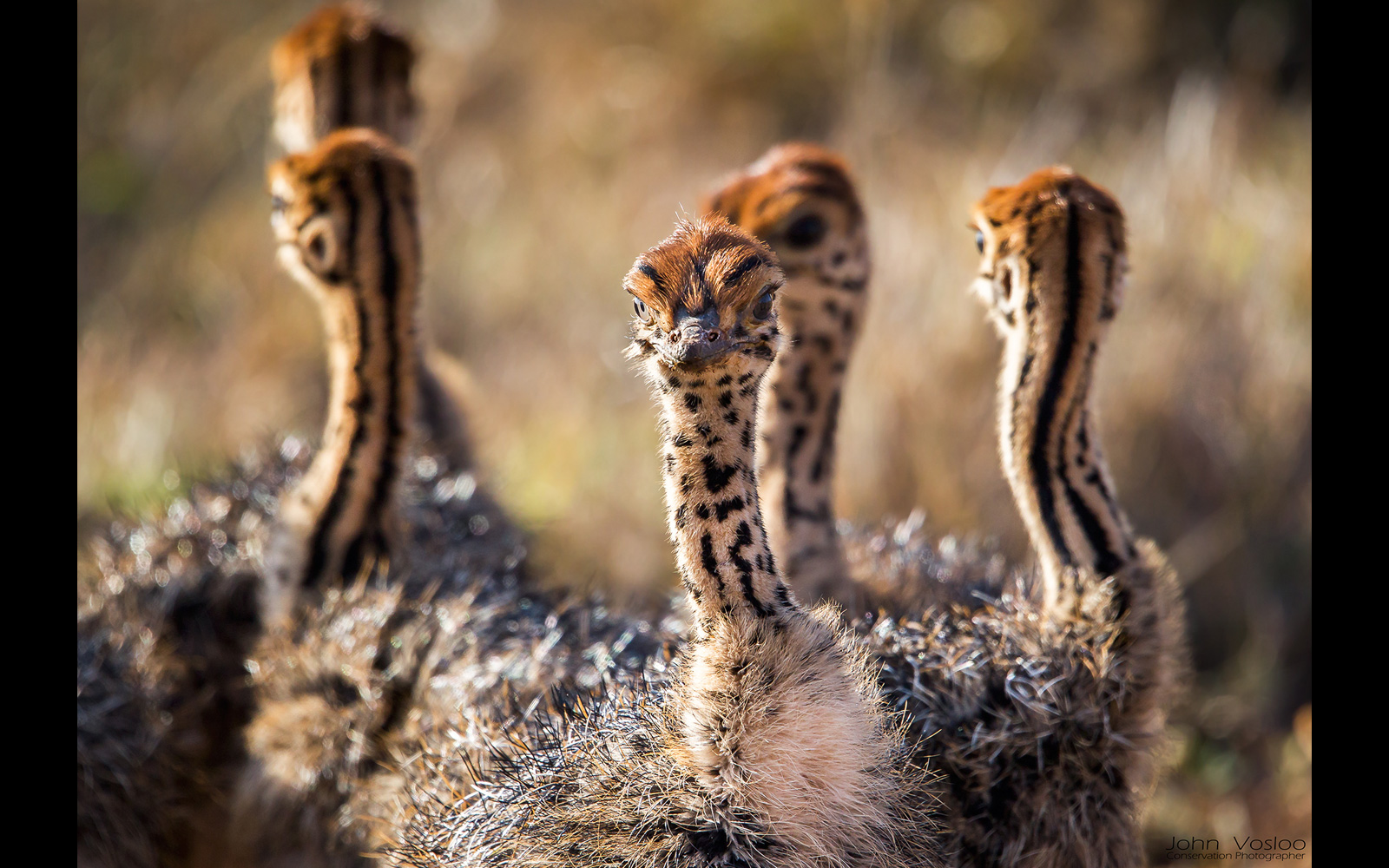
“Interestingly, this is the same crew as the other ostriches in the sunset dust image when they were still small and part of a larger group. These little ones always make for interesting photographic subjects… if one can manage to stay away from their overprotective parents – those eyes in the back of the photographer’s head are needed in this situation!
“They are generally curious little creatures and will move towards the patient photographer, allowing for some great shots of their unique and interesting patterns of colours.”
Canon EOS 1D MK4 with a Sigma 150-600mm lens (sport version) – f7.1 1/400 sec ISO 800 @ 600mm
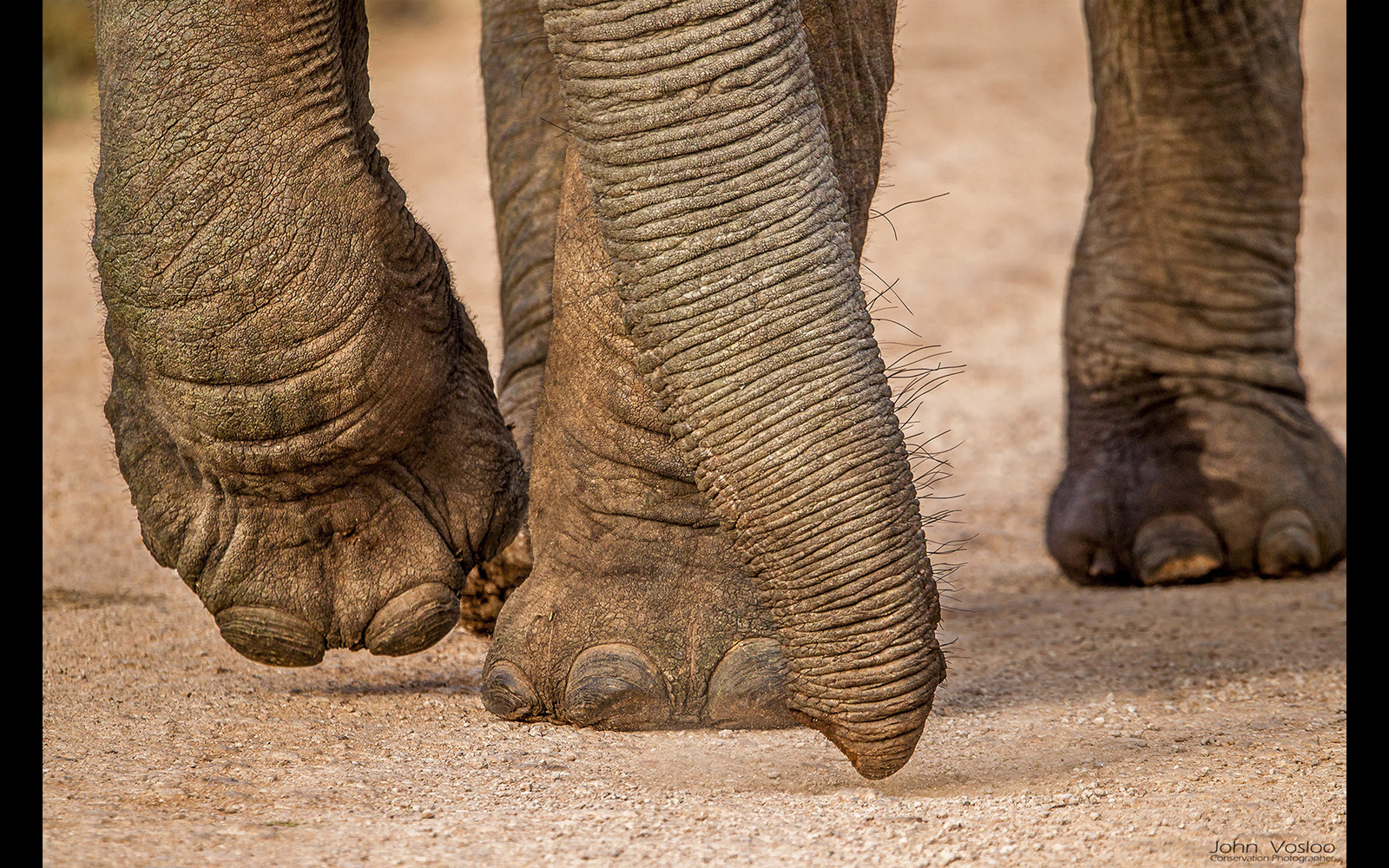
“This huge elephant bull came down a narrow road towards me in Addo Elephant National Park, and not wanting to make direct eye contact with him I decided to photograph his feet, toes and trunk in motion – parts of the elephant that is not always photographed. This made for an interesting image and a thrilling experience at the same time with a couple of tonnes of elephant moving past me just three feet away.”
Canon EOS 1D MK4 with a Sigma 150-600mm lens (sport version) – f7.1 1/500 sec ISO 800 @ 600mm
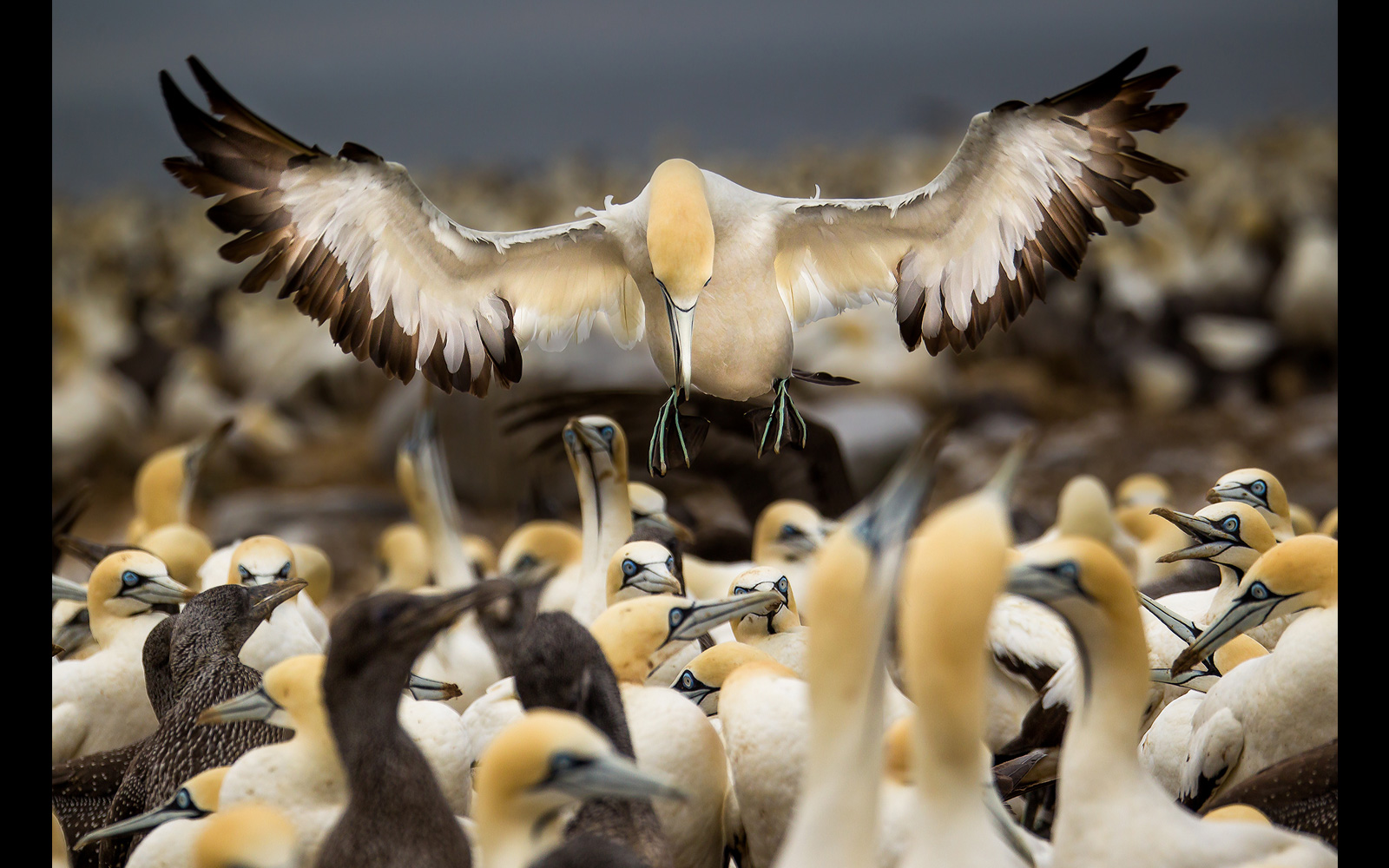
“This Cape gannet was photographed on Bird Island in Algoa Bay in the Eastern Cape. It is a highly protected island and hosts the largest flock of gannets on Earth – about 65,000 breeding pairs.
“When they come in to land, they tend to fly in a pattern, and upon seeing or hearing their chicks, they apply the brakes and drop out of the sky on the spot (as in this image) – often to an aggressive landing crew where space is already at a premium.
“It is an all-out assault on the senses to be there and witness this large flock and the vitality of life that it generates. An absolute must to those who get the opportunity to visit as it is a life-changing event!”
Canon EOS 1D MK4 with a Sigma 150-600mm lens (sport version) – f7.1 1/3200 sec ISO 500 @ 230mm
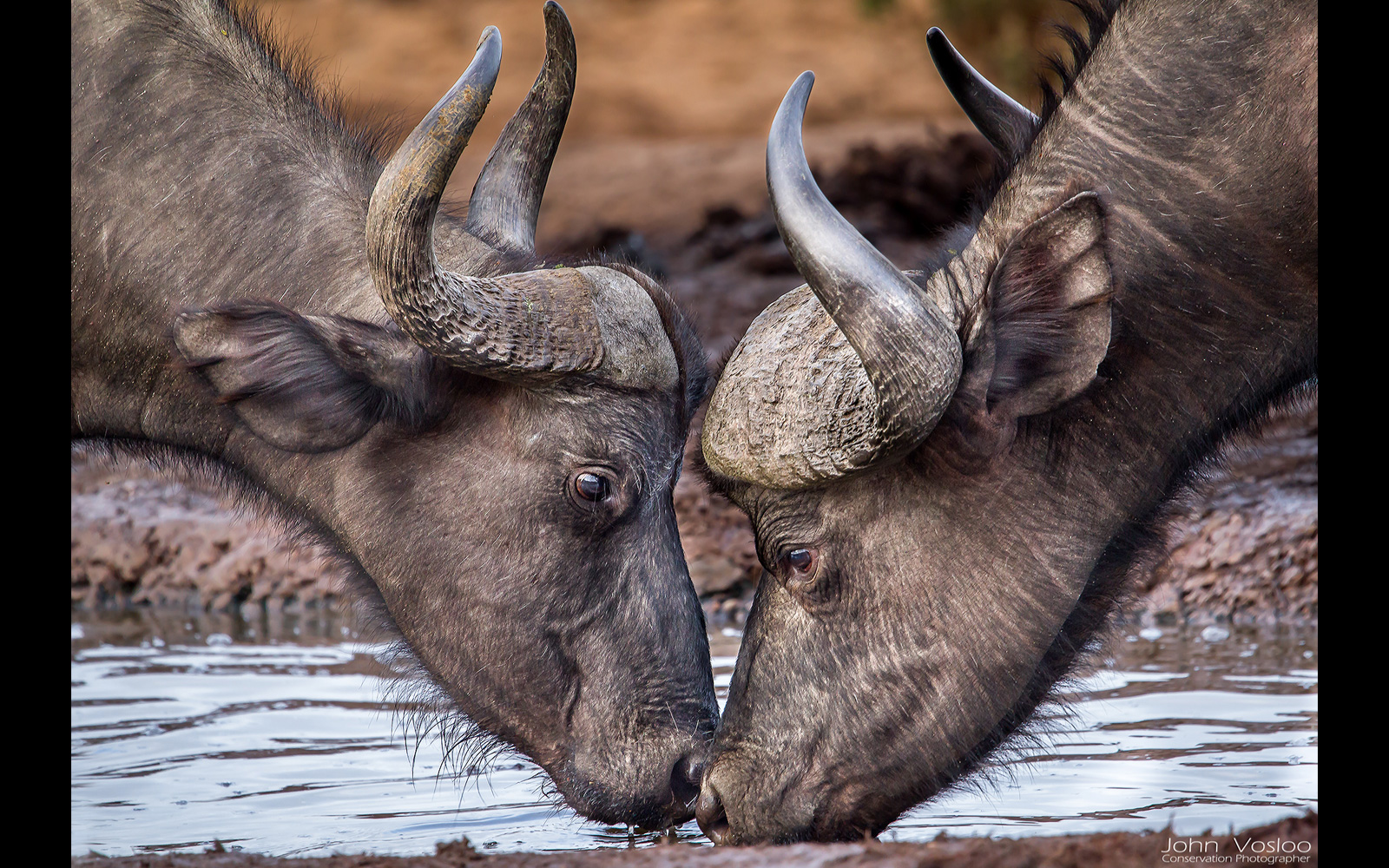
“These two buffalo were photographed at the Spekboom waterhole in the Addo Elephant National Park. Their joint symmetry while drinking caught my attention and the artful curve of their horns always make for a great photographic subject. They can be quite cantankerous, and one is always alert when photographing these species at close quarters. Born with a bad attitude, these few tonnes of fury can become quite a large problem in seconds.”
Canon EOS 1D MK4 with a Sigma 150-600mm lens (sport version) – f7.1 1/250 sec ISO 1250 @ 600mm
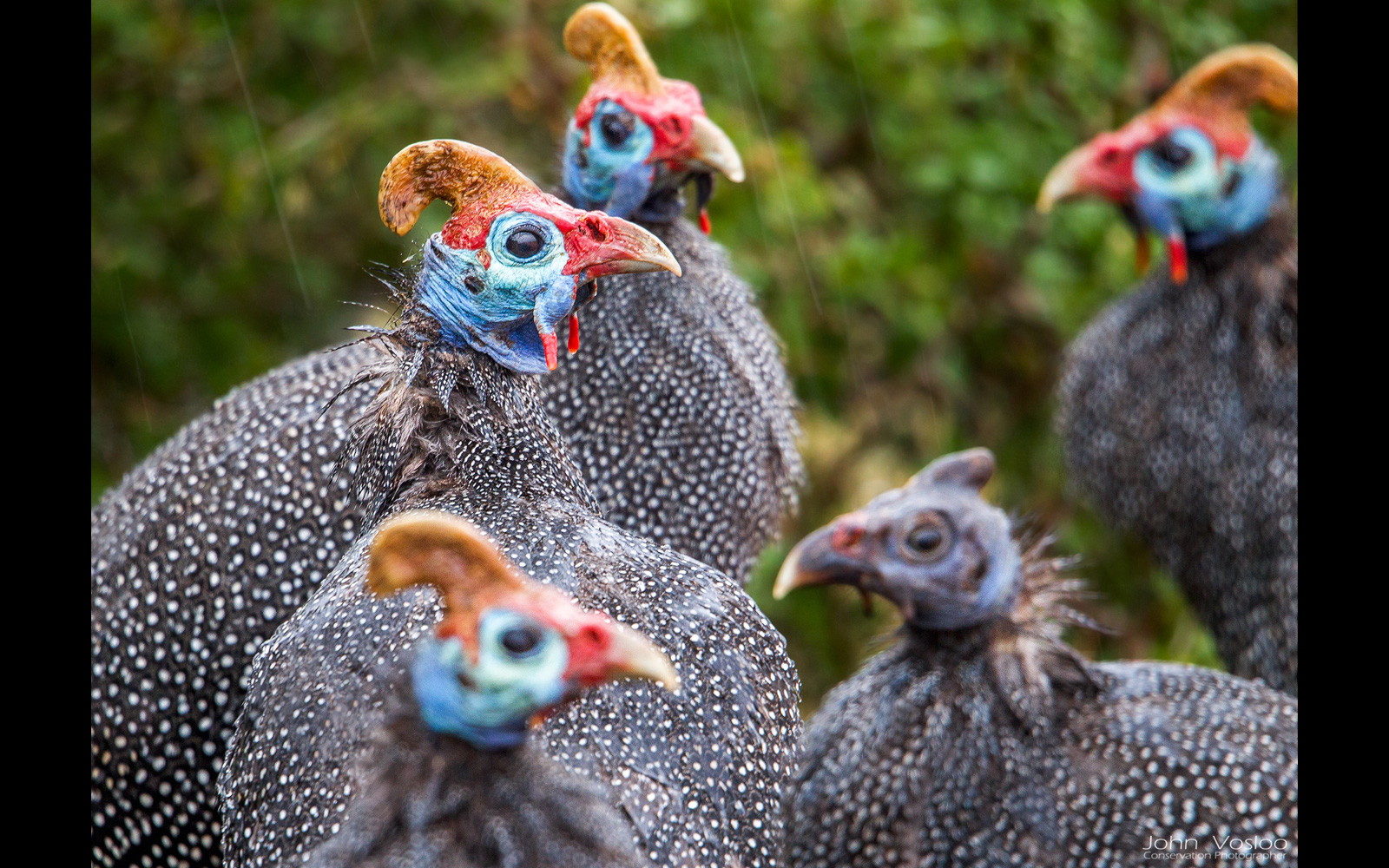
“These helmeted guineafowls in the rain created an interesting myriad of colours and shapes for me. The raindrop streaks can be seen when using slower shutter speed and the bright colours of the guineafowl, coupled with their strange yet spectacular heads, make for an interesting subject. But be warned, they are difficult to capture on camera as they move about with speed and always seem to do the unexpected. In the rain, however, they do seem to slow down a bit, allowing for an easier target.”
Canon EOS 1D MK4 with a Sigma 150-600mm lens (sport version) – f7.1 1/50 sec ISO 800 @ 600mm
ABOUT JOHN VOSLOO
“I have been involved in photography on and off for the last 20-odd years. Recently, say over the last five years, I have become more involved with digital and wildlife photography, which to me has been a whole new concept and approach to photography. My photographic mantra is: ‘Let the camera do its thing, but let your heart be the lens’.”
Some of John’s notable accolades include fifth place in the Getaway Gallery Competition (2016); Top 10 in Sunday Times Wildlife Photographer of the Year (2016); winner of Africa Geographic’s Photographer of the Year (2017); winner of Kragga Kamma’s Wildlife Photographic Competition (2017 – open category); winner of the PSSA Senior Open Division – winning image (medal award); extensively published in SANParks Addo Elephant National Park official guide; and extensive images featured in the book The Last Elephants – to be published at the end of this year.
To comment on this story: Login (or sign up) to our app here - it's a troll-free safe place 🙂.![]()




